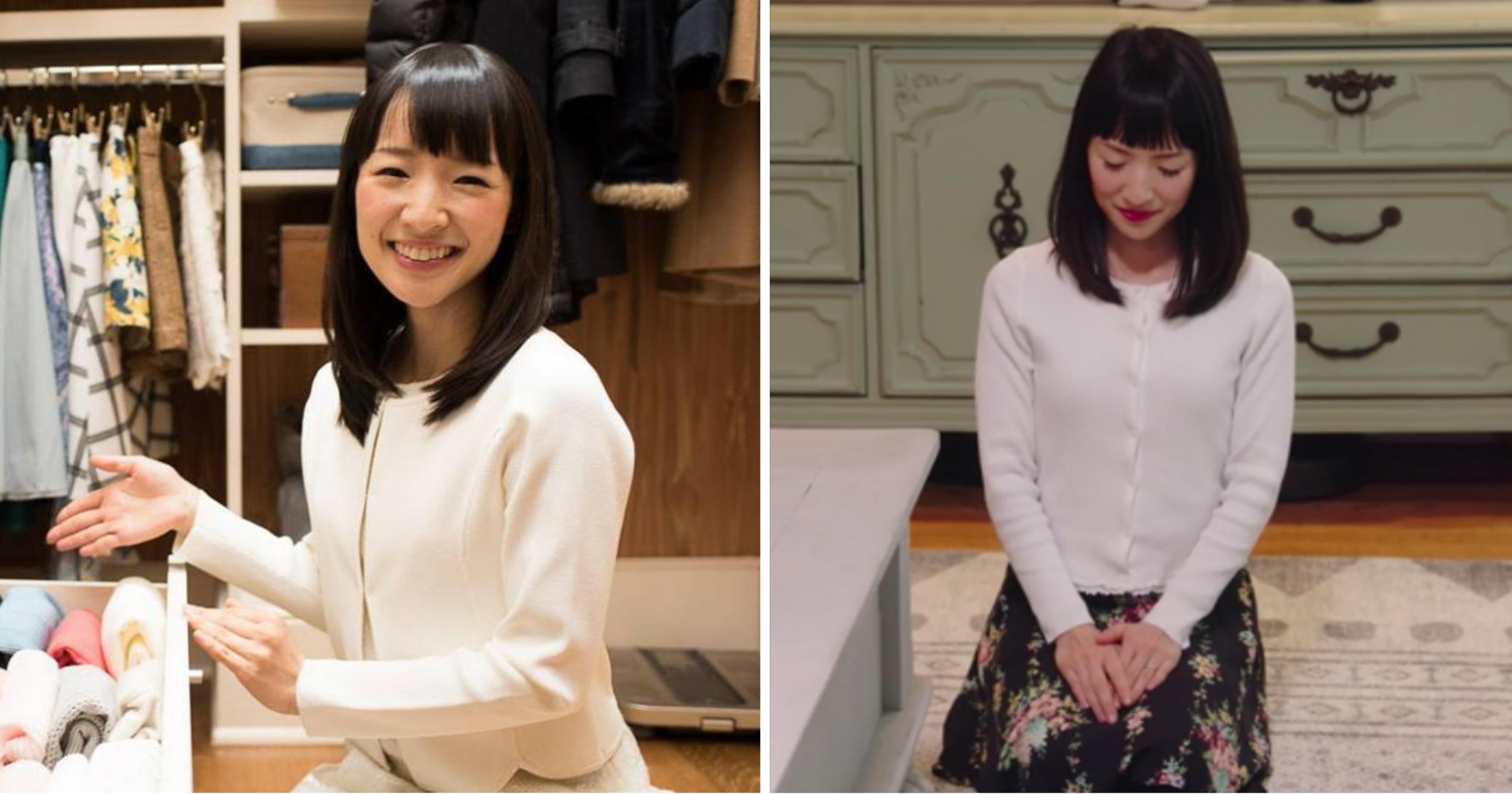Marie Kondo's latest claim to fame is a Netflix show of her own where she goes to an American household, helps its occupants tidy up their things, and turn their lives around as a result of the de-cluttering.
Kind of like Queer Eye, but with houses instead of personal grooming.
The 34-year-old Japanese woman is officially known as an "organising consultant" -- a term plucked from trusty Wikipedia -- and the author of four books about organising.
Her Netflix show, however, seems to have gotten a good number of Singaporeans off their asses and into tidying up their homes.
After watching a grand total of one episode of Tidying Up with Marie Kondo, here are five tips we got from her and the KonMari method.
1. Tidy up by categories, not location
Kondo has divided all your belongings into five categories:
- Clothes
- Books
- Papers
- Komono (kitchen, bathroom, garage, and everything miscellaneous)
- Sentimental items
She recommends tidying them up in the above order.
2. Talk to your stuff
This is not figurative, metaphorical, allegorical, or whatever. This is literal.
You greet your house.
Thank your stuff.
Then throw that stuff away.
First, for the greeting, Kondo finds a spot, kneels down, and gives her thanks to the space she is in.
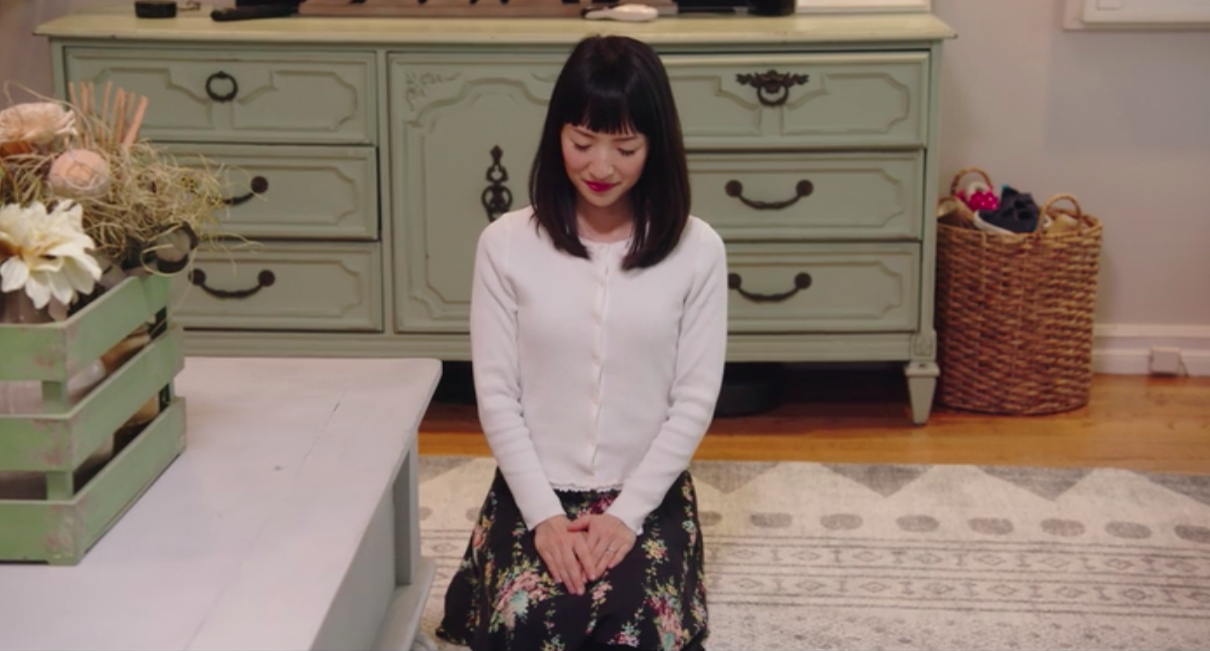 Screenshot via Netflix
Screenshot via Netflix
This can be done either externally or in your mind.
The homeowners look on, evidently puzzled and amused (before joining in and subsequently crying about the emotional experience).
Secondly, Kondo also teaches the homeowners to thank the items before letting go of them.
It goes something like, "Thank you for letting me wear you."
While getting rid of the stuff, you'll have to set this them gently, and not chuck them any how as you usually might.
The Atlantic believes that the KonMari technique appears to borrow from Shinto beliefs, specifically the notion that inanimate objects are bearers of kami, or divine essence.
Plants, animals, and people have this divine essence.
That is why Kondo "wakes up" old books by tapping on them, folds clothes so that they can rest more comfortably, and asks her clients to thank possessions for their service before setting them aside.
3) Items that spark joy
As for which items you should be keeping, Kondo says it should be items that "spark joy" in you.
"Ching!" the feeling goes:
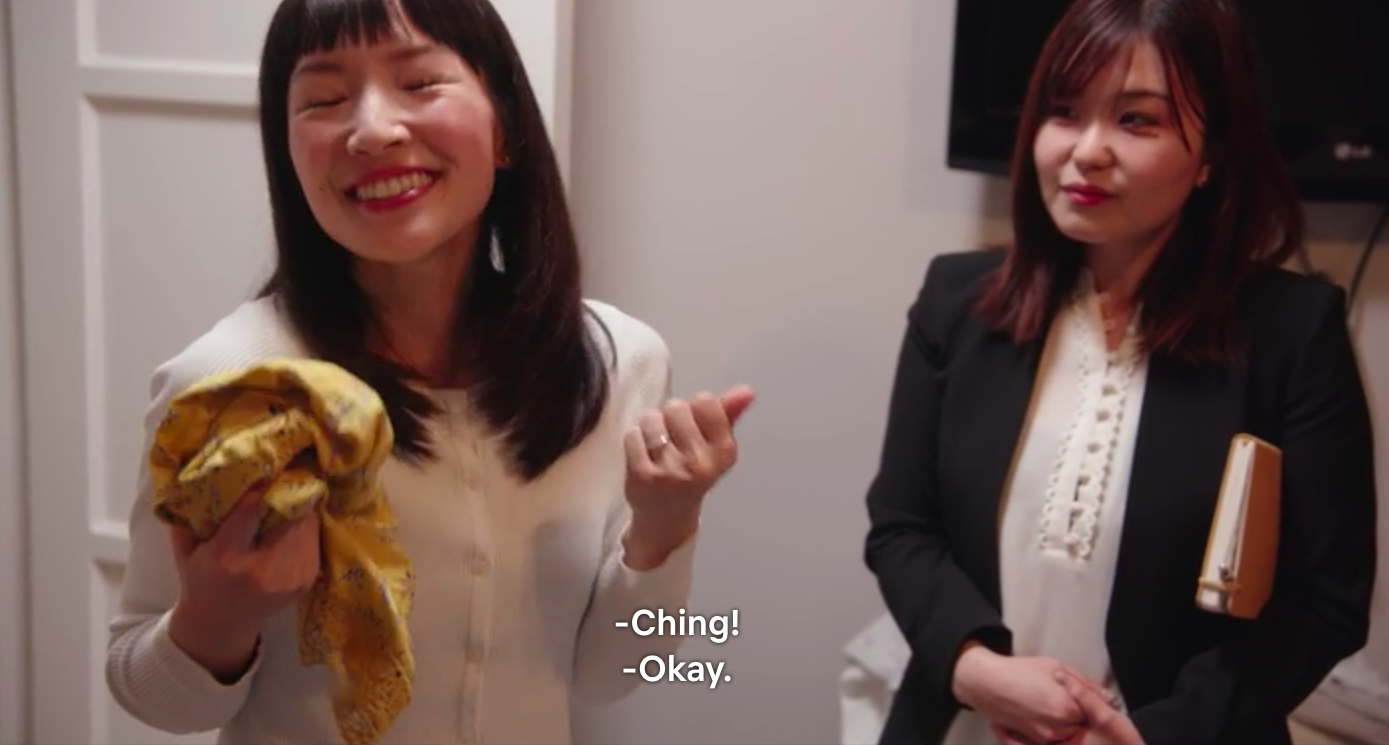 Screenshot via Netflix
Screenshot via Netflix
This is ascertained by touching each item and evaluating its value to you.
In Japanese, the term is tokimeku, meaning "flutter, throb, palpitate".
Doesn't seem like the husband is sparking any joy in the household though.
4) Tidy house = Better marriage?
When the episode started out, its occupants, Rachel and Kevin, appeared to be constantly bickering about laundry and the state of the house in general.
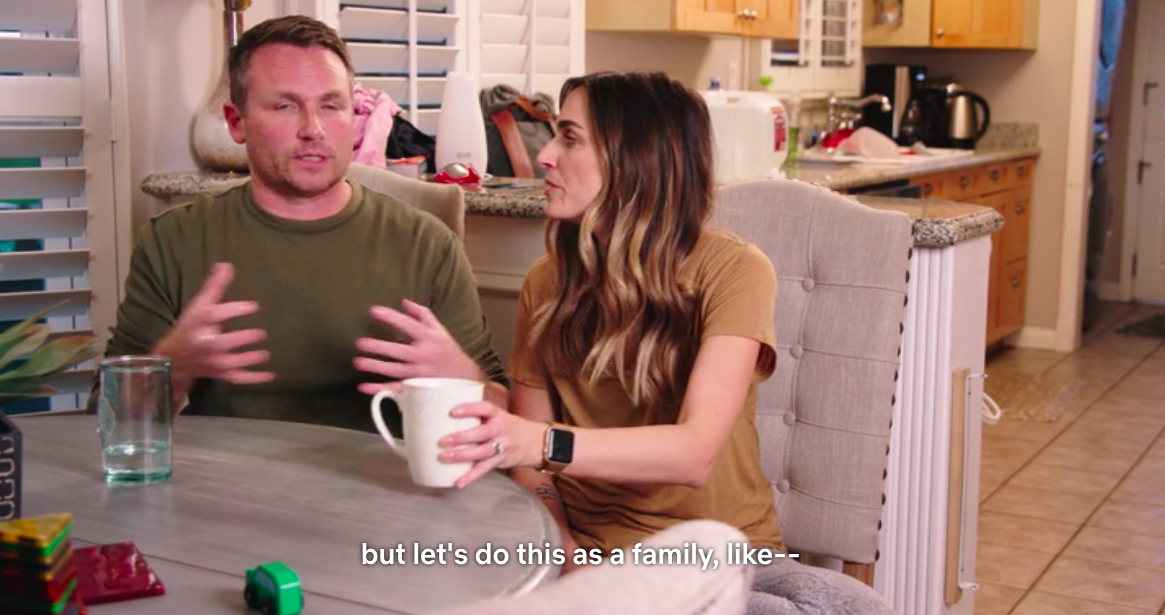 Screenshot via Netflix
Screenshot via Netflix
However, as the house gets tidier, Kevin finds the relationship less tense, and that they can "enjoy each other fully".
Rachel also realises that her husband has become more "cute" and "romantic".
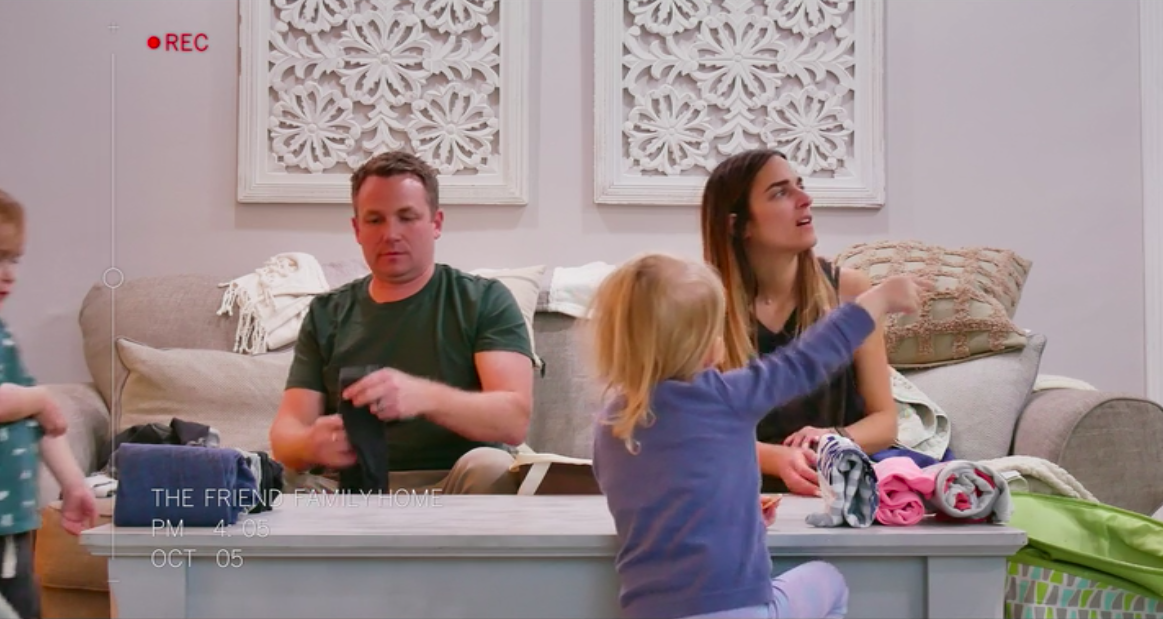 Screenshot via Netflix
Screenshot via Netflix
Cool.
5) Quotes on tidying up
No sappy love quotes (hurray), just nuggets of wisdom from Kondo about your worldly possessions:
1. "The ultimate goal of tidying is really to learn to cherish everything that you have, so that you can achieve happiness for your family, so that you can live comfortably."
2. "Only when you actually are confronted with how much exactly you have, you start to realise what you need to do."
3. "Folding is not just making your clothes smaller. It is actually an important opportunity to talk to your clothes and thank them."
And if nothing else, this show has really come in useful for the Chinese New Year and the corollary spring cleaning.
Note that the entire process took about one month for the family, though, so you'd better start now.
Top image from Netflix and Marie Kondo's Facebook
If you like what you read, follow us on Facebook, Instagram, Twitter and Telegram to get the latest updates.
